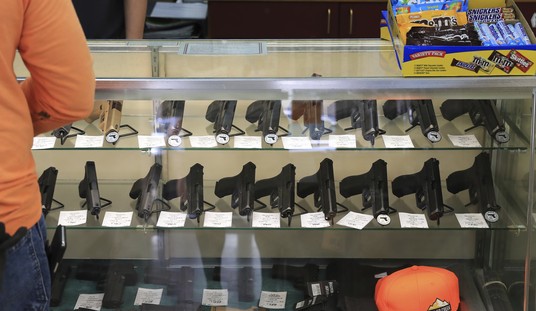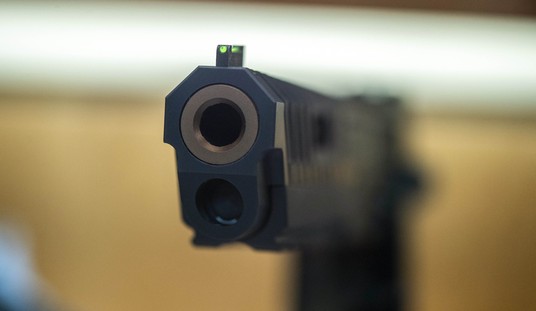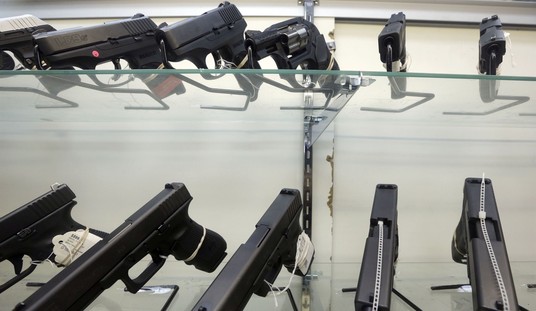My training with Storm Mountain Training Center, Suarez International, and Tactical Response has caused me to arrive at certain defensive handgun beliefs. These include: 1) A handgun must be lightweight and compact enough to be concealable or it will not be diligently carried. 2) A likely encounter will be in low light and come as a surprise, and the ammunition in the handgun will decide the outcome. 3) Size matters, with .38 Special and .380 ACP representing the minimum in effective fight stopping ability. 4) There will be a need to fire multiple times when responding to an attack. 5) Refer back to #1 and always carry!
While these are core beliefs, my thoughts on how best to satisfy them have continually evolved over the years. Flexibility is the key to effective defensive carry practices. The Dan Wesson Concealed Carry Officer (CCO) pistol reviewed in this article combines the time-proven .45 ACP cartridge with a carry platform that benefits from nearly a century of refinement. The Dan Wesson CCO represents portability, reliability, controllability and lethality. This is a perfect combination for a personal defense handgun.
Why another 1911?
In 2000, Dan Wesson Firearms started working on the development of a new 1911-style pistol. The goal for this product line was to create the most accurate and reliable out of the box 1911s on the market, with features dictated by feedback from customers. Dan Wesson Firearms (founded in 1968 by Daniel B. Wesson and functioning independently with several ownership changes both before and after its founder’s death in 1978) became part of the CZ group of companies in 2005. Since CZ is the largest firearms producer in the world, operating under the CZ corporate umbrella gave Dan Wesson the financial backing and corporate resources to once again pursue the quality products the company was known for.
In the CCO model, Dan Wesson combines an Officer-grip frame with a Commander-length slide. The shorter, compact Officer-sized grip aids concealed carry and minimizes the chance of printing under a cover garment. The back of the CCO’s mainspring housing is bobbed to further aid concealability. The Commander-length slide with 4.3-inch barrel provides the optimum mix of sight radius, concealment, weapon balance, and reliability. The CCO measures 8 inches long by 5.1 inches high. An anodized aluminum frame and mainspring housing creates an unloaded weight of 27 ounces. The Dan Wesson 1911s are "Made in the USA" at Dan Wesson’s Norwich, New York facility.
 |
Attention to detail
Dan Wesson literature points out features such as an undercut trigger guard and "chain link" checkering pattern on the front strap and mainspring housing to aid in positive grip and recoil management. The stainless steel slide and other parts are coated in a ceramic based finish for protection against the type of wear to which a concealed carry handgun is subjected. The CCO does not use a full-length guide rod, but rather a plug bushing and spring as designed by John Browning. This will warm the hearts of many 1911 purists who deride the use of full length guide rods in a 1911 as a solution to a problem that does not exist.
Dan Wesson’s Operation Manager Keith Lawton told me that upcoming 2010 CCO models will feature another type of coating that is bonded at the molecular level. There are other slight changes between the 2009 CCO I tested and the pending 2010 CCO model, such as using a Dan Wesson thumb safety versus the current Ed Brown Tactical Thumb Safety, along with a different bushing design and tweaks in the slide stop and magazine catch texturing. The newer model will use fire controls made from tool steel rather than barstock or cast metal.
Dan Wesson has equipped the CCO with seven-round capacity magazines. Kudos should be given to Dan Wesson for making the higher capacity magazines standard with the CCO and supplying two magazines (compared to a single magazine some other 1911 manufacturers provide). Trijicon tritium night sights complement the CCO’s intended role as a concealed carry weapon. The front and rear sights contain contrasting color vials for easier orientation when aiming in dark conditions. Furthermore, a white ring on the front post assists in concentrating on the front sight. The sights are designed to allow fast target acquisition while still permitting precise shot placement at increased target distances. Another example of attention to detail is Dan Wesson’s use of a medium length trigger shoe to better accommodate firing grip.
I hope I am not appearing too superficial by dwelling on looks, but the Dan Wesson CCO is a sharp looking pistol exuding understated confidence with "CCO" inscribed on the slide in a low profile script. Aesthetically pleasing, yet functional, dark wood grips contrast nicely with the CCO’s dark metal components. The CCO is proof positive that a weapon can look good and still function as designed. It typifies why the 1911 is still as popular as ever, even with other handgun platforms available that offer higher capacity. The 1911 is an aficionado’s weapon that continues to attract users with its natural handling, great trigger, potent .45 ACP chambering, and never to be underestimated nostalgia.
Carrying the CCO
While a concealed carry pistol’s reliability must be beyond reproach, carryability is just as important considering the hours spent with the weapon holstered. The needs of civilian concealed carry put considerable constraints on suitable weapons and accessibility. You do not want your prized full-size 1911 printing under your shirt or–heaven forbid–falling out at a local restaurant or basketball game. I tested the CCO in various holster designs from DeSantis, Galco, and Blackhawk, since I already had multiple proven holsters in my inventory from other 1911 designs I’ve used for daily concealed carry. Successful daily carry is never static in practice: A Galco Royal Guard IWB with reinforced mouth proved a mainstay during the review, but it wasn’t the only one by any means. A DeSantis New York Undercover shoulder holster augmented the IWB as dress and social setting dictated. Finally, a Blackhawk Serpa retention holster set up with the paddle style attachment completed my concealed carry options. Equipped with these various holsters, I was prepared to cope with most carry situations.
Remember, the defender is reacting to an attack and must overcome the reactionary curve while maintaining concealability and retention. Flexibility is the key to effective carry practices with inside the waistband (IWB), Yaqui slides, belt slide, side-of-back, and shoulder holsters all a part of a concealed carry practitioner’s repertoire. "Side of back" may be an unfamiliar term: in this method of carry, a "small of back" holster is used, but is not carried over the spine. I am not comfortable with a weapon lying across my spine, and frankly find it difficult to reach that far behind my back to access the weapon. The firearm’s actual position is deep behind the hip. This method takes advantage of the nearly horizontal butt up carry of the DeSantis small of back holster, a trick which aids in concealability.
Quality of equipment such as holsters, magazine carriers, and gunbelts cannot be underestimated in importance either. No matter which holster I was using, two Wilson Combat 8-round magazines accompanied it in a DeSantis double magazine pouch. Single stack magazines are easier to conceal than double magazines due to width projecting off the belt line.
Shooting the CCO
I used Black Hills, Hornady, Speer, Winchester, and Wolf ammunition for my range tests. Loads fired spanned 185gr. to 230gr., including both hollowpoints and FMJ bullet types. The CCO’s ergonomics and handling characteristics demonstrate why the 1911 is a legend. I experienced no malfunctions while test firing more than 550 rounds during range visits. It was refreshing to see a 1911 function out of the box without needing a "break in" period.
During range testing, Wilson Combat magazines supplemented the two 7-round magazines shipped with the CCO. The Wilson Combat magazines are for full-size 1911s and projected below the CCO frame, yet functioned as expected, considering Wilson’s reputation for quality magazines. One may want to consider carrying the supplied 7-round magazine in the weapon for concealability while carrying 8-round or even 10-round magazines for reloads.
On the range, I began testing the Dan Wesson CCO by verifying sight zero and then firing several magazines rapidly at various steel targets. This quickly shows if any reliability issues exist. Honestly, if a defensive pistol is not at the very least reliable what good is it? Further testing consisted of strings of fire against steel plate racks and popper targets at seven, 15, and 25yds. The sights were zeroed in for 25yds using the classic 6 o’clock hold.
Considering the Dan Wesson CCO’s primary role as a concealed carry handgun, I decided to evaluate it using several drills taken from Roger Phillip’s Suarez International Point Shooting Progressions course. To clarify, point shooting is not random, mindless firing from the hip. Rather, point shooting is shooting aimed using means other than the sights. Aiming references include using the slide orientation below your line of sight, shoulder alignment, wrist cant, and specific forearm positions. Hand-eye coordination is a premium when using point shooting techniques. I used a flash sight picture in a couple of drills before bring the handgun even lower from the line of sight, eventually ending up with elbow anchored in hip socket. The natural pointability of the 1911 comes into its own in the point shooting realm.
I also put the CCO through its paces by shooting a course designed for a LE competition held every year at the range where I do most of my testing. Multiple targets are engaged from three different positions with mandatory magazine changes between firing positions. I find this gives a good benchmark for time and accuracy by being able to compare it to the average times posted by numerous competitors. Even under the induced stress of drawing against a timer and engaging multiple targets, the beavertail grip safety and manual safety were always positively engaged.
The short grip frame and relative light weight of the CCO made recoil more of a factor versus a full size 1911, but in no way unmanageable. The wood DW Shadow grips on the CCO are designed with a "swelling" in radius that fills the hand better. I was surprised by the better feel and better handling in the Officer-size frame compared to previous experience with similar-sized 1911s.
The bottom line
The Dan Wesson CCO’s performance has revived my interest in the compact 1911 as a viable concealed carry handgun. I found the reduced size and weight of the CCO more beneficial for concealed carry than a full size 1911. There are many 1911s, not to mention other models, available on the market, but none exceed the capability of this natural handling, reliable 1911 chambered in 45ACP. The Dan Wesson CCO’s performance, combined with 1911 nostalgia, is difficult to resist when pondering purchase of a concealed carry handgun.
Thanks to the United States Concealed Carry Association for this article. To get USCCA tactical emails free just click here and sign up.








Join the conversation as a VIP Member